How to Fix Activation Error 0xc004f200 on Windows
Some Windows users are encountering that they are experiencing an activation error 0xc004f200 that ends up essentially bricking their OS and labeling it as non-genuine. This problem is reported to occur on both Windows 10 and Windows 7.
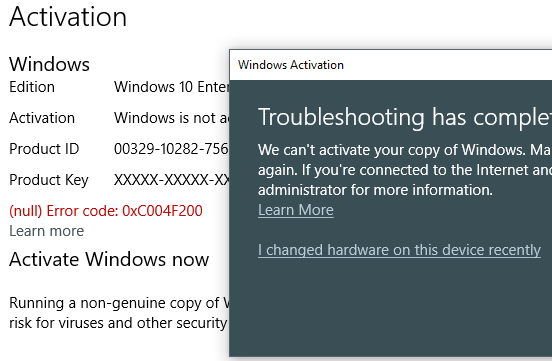
After investigating this particular issue thoroughly, it turns out that there are several different underlying causes that might be responsible for the apparition of this error code. Here’s a list of potential culprits:
- Sever-related Activation issue – As it turns out, more often than not, a licensing inconsistency can be responsible for this particular error code. In most cases, you can resolve the issue by running the Activation troubleshooter and applying the recommended fix.
- A recent deployment of a bad update – If you recently installed a cumulative update that included the KB4480970 security patch, chances are one of the patches has triggered a ‘non-genuine error. In this case, you should be able to fix the issue by uninstalling the problematic security update and clearing up any remnant files.
- System file corruption – Under certain circumstances, you might see this error occurring due to some kind of system file corruption that is affecting your OS’s ability to check the integrity of your license key. In this case, you will be able to resolve the problem by repair installing, or clean installing.
- Licensing key inconsistency – If none of the fixes that can be deployed by yourself prove to be effective in your case, the only thing left to do is to get in contact with a Microsoft support agent and ask them to inquire about the status of your license key. If everything checks out, they have the ability to re-activate your license key remotely.
Now that you are aware of every potential cause that might trigger this activation error on Windows 10 and Windows 7, here’s a list of methods that other affected users have successfully used to get to the bottom of this issue:
Method 1: Running the Activation Troubleshooter
Before you move on to more technical fixes, you should start by ensuring that the issue is not server-related.
More often than not, you can attribute the apparition of this issue to a licensing inconsistency that’s affecting your computer’s ability to communicate with the activation servers.
In this scenario, you should start this troubleshooting guide by running the Activation Troubleshooter and applying the recommended fix.
Note: Most user reports flagging this issue have reported that the problem only started occurring after they made a major hardware change (most commonly replacing the motherboard).
If this scenario is applicable in your particular scenario, follow the instructions below to run the Activation Troubleshooter and apply the recommended fix:
- Start by opening up a Run dialog box by pressing Windows key + R. Next, type “ms-settings:activation” and press Enter to open up the Activation tab of the Settings menu.
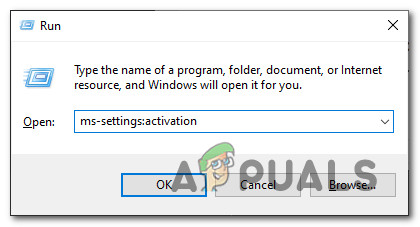
Opening the activation Troubleshooter - Once you’re inside the Activation tab of the Settings app, move over to the right-side pane and click on the Troubleshoot button under Activate Windows.
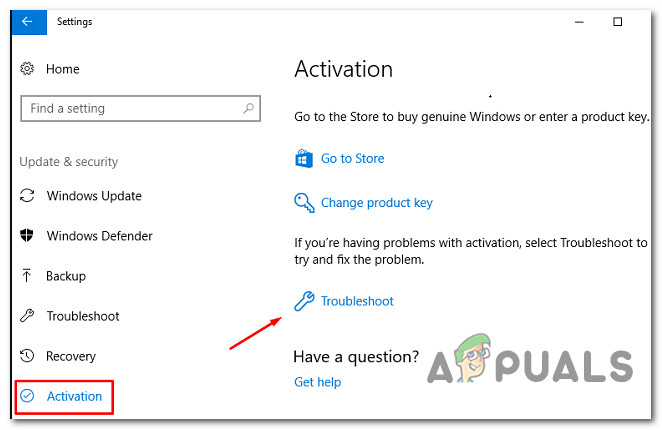
Running the Activation Troubleshooter tab - After you open the activation troubleshooter, wait until the initial scan is complete, then click on Apply this fix if a viable repair scenario is identified.
- If the fix is successfully applied, reboot your computer and see if the problem is fixed once the next startup is completed by attempting to activate the license key once again.
If you still end up seeing the same 0xc004f200 error is still occurring during the activation process, move down to the next potential fix below.
Method 2: Uninstalling the Problematic Update
Although Microsoft never acknowledged this issue, the apparition of the 0xc004f200 error coincides with the deployment of the KB4480970 security patch. This patch affected both Windows 7 and Windows 10 and has triggered a ‘Non-Genuine‘ error on volume-licensed Windows clients that already had the KB 971033 update installed.
If the scenario described above is perfectly applicable to your situation, the instructions below will allow you to uninstall the problematic KB4480970 update and ensure that you resolve the 0xc004f200 error code.
Keep in mind that we’ve put together 2 separate guides to accommodate both Windows versions (Windows 7 and Windows 10) – Follow the sub-guide that is applicable to the operating system that you’re currently encountering the issue on:
A. Uninstalling the Security Patch KB4480970 on Windows 10
- Press Windows key + R to open up a Run dialog box. Next, type “ms-settings:windowsupdate” inside the text box and press Enter to open up the Windows Update screen of the Settings app.
- Inside the Windows Update screen, click on View Update history from the left-hand pane.
- Then, once the list of recently installed updates loads up, click on Uninstall updates (at the top of the screen).
- Scroll down through the list of installed updates and locate the KB4074588 update inside the list of installed updates.
- Once you manage to locate the update, right-click on it and choose Uninstall from the context menu. Next, click Yes at the confirmation prompt to start the process.
- After the update has been uninstalled, visit the official download link of the troubleshooter and install the Microsoft Show or Hide troubleshooter package.
- When the download is complete, open the .diagcab file and start by clicking on the Advanced button. Next, check the box associated with Apply Repairs Automatically.
- Click Next to advance to the next menu, then wait for the utility to finish the scan for updates before clicking on Hide Updates.
- Finally, check the box associated with the update that you want to hide, then click on Next to advanced to hide the selected update from Windows Update.
- Once the troubleshooter is running, wait until the procedure is complete, then restart your computer and see if the issue has been resolved once the next startup sequence is complete.
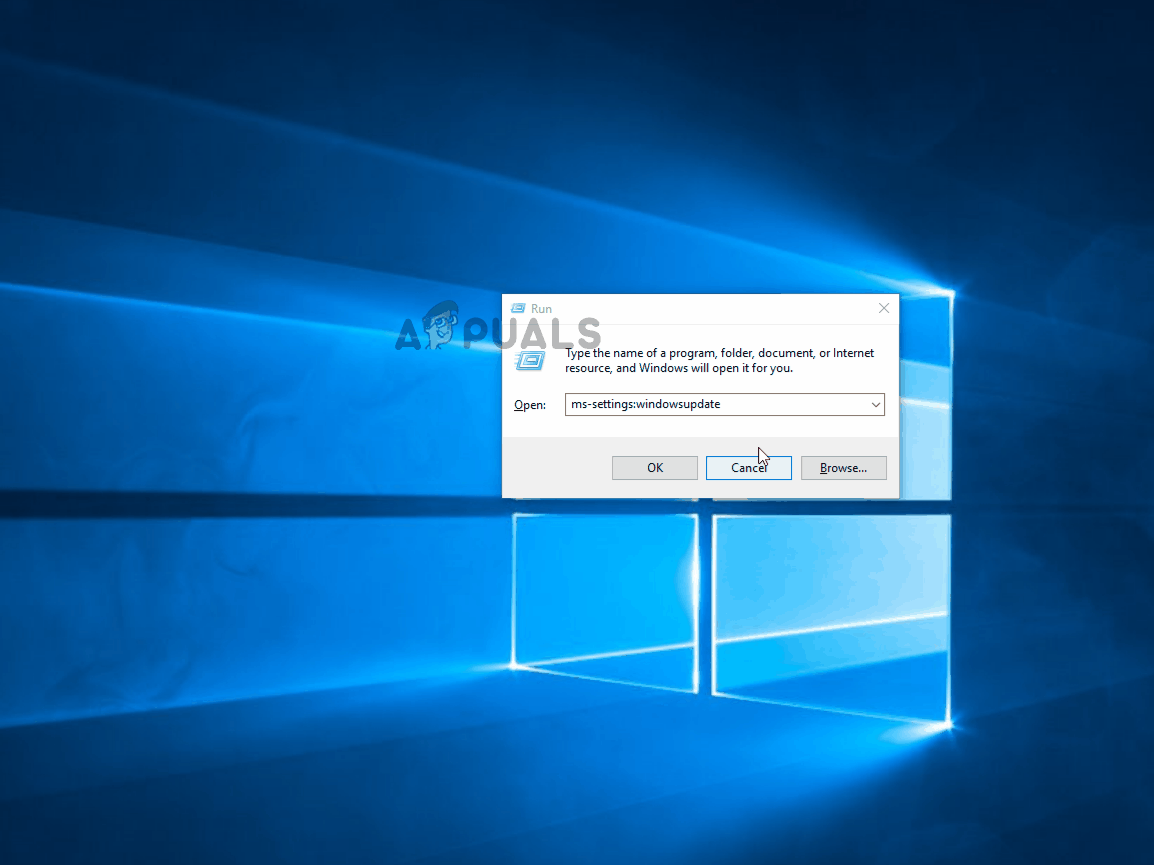
B. Uninstalling the Security Patch on Windows 7
- Press Windows key + R to open up a Run dialog box. Next, type ‘control’ inside the text box and press Enter to open up Control Panel. If you are prompted by the UAC (User Account Control), click Yes to grant admin access.
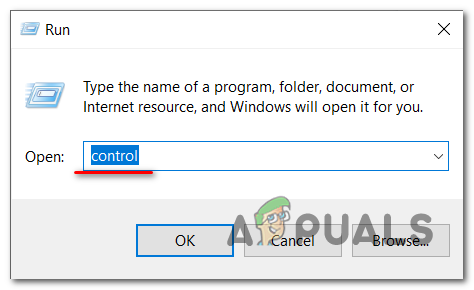
Accessing Control Panel - Inside Control Panel, navigate to Windows Update > View Update History > Installed Updates.
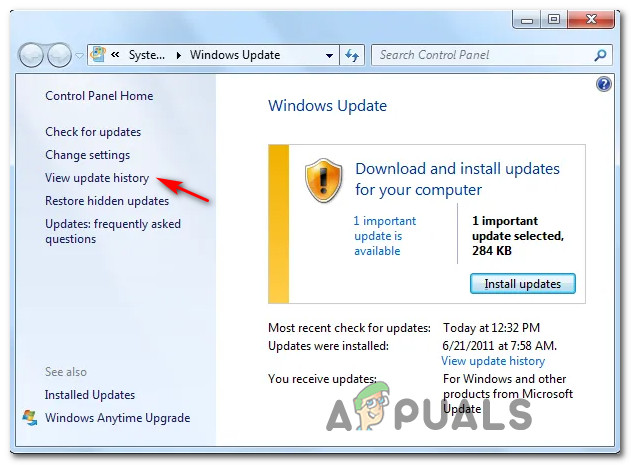
Viewing the Update History - Once you’re inside the Installed Updates menu, right-click on Update for Microsoft Windows (KB971033) then click on Uninstall from the context menu that just appeared.
- Once the update is uninstalled, press Windows key + R to open up a Run dialog box. Inside the text box, type ‘cmd’ and press Ctrl + Shift + Enter to open up an elevated Command Prompt menu.
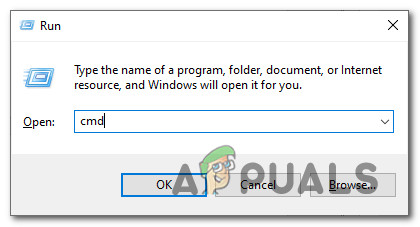
Opening an elevated CMD prompt Note: Click Yes at the UAC (User Account Control) to grant admin access.
- Inside the elevated Command prompt, type the following commands and press Enter after each one to uninstall any remnants from the problematic security update that was causing the issue:
wusa /uninstall /kb:971033 dism /online /Remove-Package /PackageName:Microsoft-Windows-Security-WindowsActivationTechnologies-Package~31bf3856ad364e35~amd64~~7.1.7600.16395
- Once the two commands above have been processed successfully, go ahead and rebuild the activation-related files then reactivate the system by running the following commands in the same CMD prompt and pressing Enter after each command:
net stop sppuinotify sc config sppuinotify start= disabled net stop sppsvc del %windir%\system32\7B296FB0-376B-497e-B012-9C450E1B7327-5P-0.C7483456-A289-439d-8115-601632D005A0 /ah del %windir%\system32\7B296FB0-376B-497e-B012-9C450E1B7327-5P-1.C7483456-A289-439d-8115-601632D005A0 /ah del %windir%\ServiceProfiles\NetworkService\AppData\Roaming\Microsoft\SoftwareProtectionPlatform\tokens.dat del %windir%\ServiceProfiles\NetworkService\AppData\Roaming\Microsoft\SoftwareProtectionPlatform\cache\cache.dat net start sppsvc cscript c:\windows\system32\slmgr.vbs /ipk <edition-specific KMS client key> cscript c:\windows\system32\slmgr.vbs /ato sc config sppuinotify start= demand
- After every command is successfully processed, close the elevated command prompt, restart your computer and see if the issue is now fixed.
Method 3: Refreshing every Windows Component
If none of the methods above have worked in your particular scenario that’s causing the 0xc004f200, the next thing you should investigate is some type of underlying system file corruption that is affecting your OS’s ability to check the integrity of your license and activate it if necessary.
In this case, the best thing you can do is refresh every Windows component that might be causing this problem with a procedure like clean installing or repair installing:
- Repair installing – In case you have important information on your Windows drive, go for a repair install procedure since it will allow you to keep all your personal data. You will be able to keep your personal media, apps, games, and even some user preferences associated with your current OS installation. The main issue is that you will need to insert or plug in a compatible installation media in order to trigger a repair install procedure.
- Clean installing – If you don’t have any important data on your OS drive, the quickest and painless procedure is to go for a clean install. This operation will erase any personal data on the OS drive, but you will be able to trigger this procedure directly from the GUI menu of Windows without having to plug in a compatible installation media.
Method 4: Contacting Microsoft’s Support
If none of the methods above didn’t allow you to re-activate your Windows build and you’re still encountering the 0xc004f200 error, the best course of action is to get in contact with Microsoft’s support team and ask them to activate your operating system.
There are a couple of different ways that will allow you to do this, but the most convenient way of getting this sorted is to get in touch with a Microsoft Agent via the toll-free number that’s specific to the region where you are located.
Here’s a list of country-specific phone numbers – Depending on your region and the number of support agents that are active in that time frame, you might need to wait a couple of hours before you get in contact with a live agent.
Once you manage to speak to a human, you will be asked a number of security questions to confirm that you actually own the license key that you’re trying to activate. If everything checks out, they will activate your Windows build remotely.




